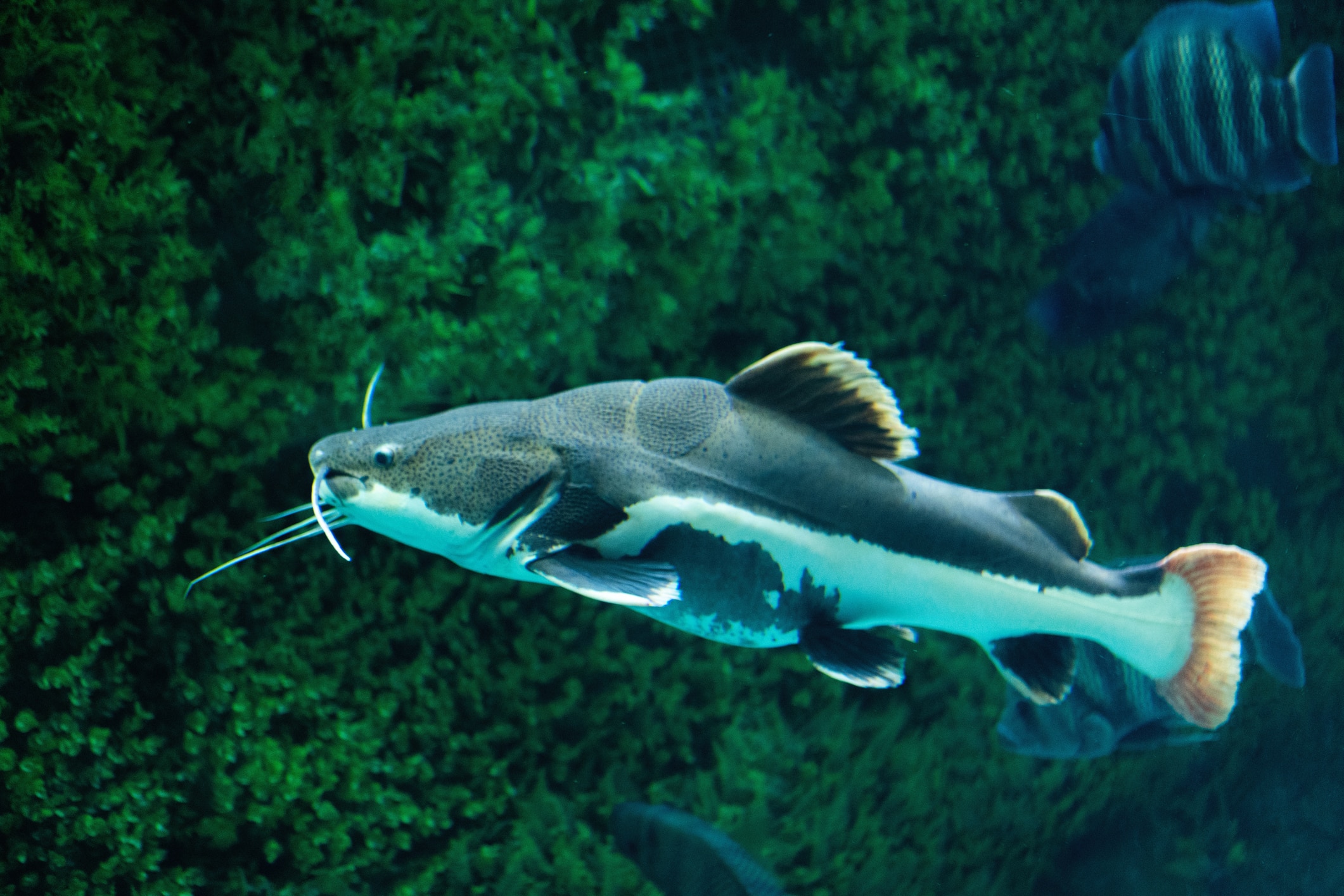Blue Planet Aquarium is home to some of the most wonderful marine creatures in the world. Any aquarium worth its (sea)salt, will make sure they have at least one type of catfish in their exhibits, and, not to brag, but here at Blue Planet Aquarium, we’ve actually got 4 species of catfish. But right now we’re going to take a look at just the red tailed catfish.
Species
What is a red tailed catfish?
A red tailed catfish (Phractocephalus hemioliopterus) is a type of freshwater catfish native to South America. They’re known for their red caudal fin (tail), which gives them their name. They’re a carnivorous fish, feeding mainly on worms, prawns, mussels, and krill.
Appearance
What do red tailed catfish look like?
Factfile
Our fish are full of character that’s deeper than just their appearance! These incredible facts will help you to have a better understanding of the red tailed catfish and, hopefully, a better appreciation of them!
What are the barbels for?
A red tailed catfish’s barbels aren’t just to make them look adorable, but they serve an incredibly important purpose: to smell! Catfish tend to live in dark, murky water so their eyes aren’t much use to them. Their incredibly sensitive barbels help them to navigate their environment and hunt prey.
How long do red tailed catfish live for?
Red tailed catfish have quite a long lifespan for a fish, living up to 15 years in captivity and slightly longer in the wild. This type of catfish grows quite large and needs a lot of space when kept in captivity, sometimes catching out amateur aquarists.
How does a red tailed catfish hunt?
Unlike other catfish species, red tailed catfish are active hunters with an insatiable appetite. When it comes to their hunting ground, they protect it aggressively and use their large frame to defend it from other fish.
See the red tailed catfish at Blue Planet Aquarium
Now that you’ve heard all about this catfish species, what are you waiting for? Book your tickets to Blue Planet Aquarium where you can see the red tailed catfish in our Flooded Forest exhibit, alongside plenty of our other exciting marine creatures.






